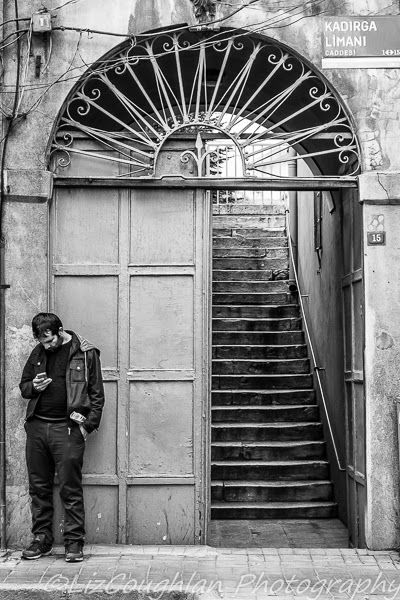Where am I? Is this still Istanbul?
Laleli and Aksaray are cosmopolitan areas of Istanbul largely inhabited by Eastern Europeans. In fact, you could be forgiven for thinking you were in another country completely! Undaunted, I scoured the area for things to photograph in my study of street photography for
Thatcher Cook's workshop in Istanbul.
Obviously the clothes are designed for leggy, blonde Russian girls!
The area is mostly full of clothes shops and wholesale dealers. Everywhere you can see men transporting huge bundles along the streets, heading towards the bus station.
Men can be seen trundling huge loads...
...or waiting around for the next lot!
...or just waiting around!
Tas Han, the old bazaar quarter
I did stumble on one interesting bazaar area, that of theTas Han. Built on the site of a Byzantine water cistern, Tas Han was constructed in 1763 as part of the Laleli Mosque complex as an inn for travellers, and later as a barracks for soldiers. The han gradually fell into disrepair until it was rescued by a local man, Kemal Ocak, who saw its potential, and financed its restoration from 1993 - 1996. Today it is a thriving shopping area, but with old world charm, and some very good restaurants.
The original stonework was preserved as much as possible in the restoration of the han,
as can be seen in the upper floors...
...and in the long narrow corridors of shops
Nearby, these workmen were playing with a dog; business seemed slow...
...although the shoe cleaner was busy with a customer...
...and these ladies were selling their knitwear.
Finally, it was time to go, so I took the tram back to the hotel ready for the next adventure.
This was an interesting area, because of the different types of people there, and its cosmopolitan feel. I think I will have to visit again soon.
Elizabeth Coughlan









































